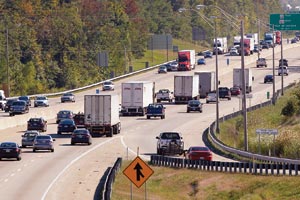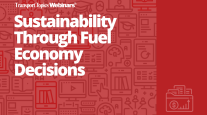GHG Comments Reflect Divide on Timeline of Phase 2 Proposal

With the comment period now closed on the federal greenhouse-gas proposal to limit emissions from trucks, battle lines are drawn between vehicle owners and manufacturers who want fuel-efficient and well-tested trucks and environmental activists seeking the toughest standards as soon as possible.
Truck makers and users said there must be an appreciation of the enormous capital expense the vehicles represent.
The environmental groups, led by the California Air Resources Board, said it is critical to hack away at carbon output leading to climate change and to accelerate the development and adoption of new technologies.
The Phase 2 GHG proposal covering heavy- and medium-duty trucks issued in June generated 140,449 responses from citizens and organizations through the close of the comment period Oct. 1. Less than 1% of the statements had been posted online as of press time.
“Fleets can better absorb cost increases associated with the purchase of fuel-efficient technologies if they deliver reasonable payback periods and return on investment. We are concerned that the actual costs of Phase 2 technologies for model year 2017-2027 vehicles and trailers will greatly exceed the agencies’ estimates,” a coalition of 16 business groups, including American Trucking Associations, said in comments to the Environmental Protection Agency and the National Highway Traffic Safety Administration.
“We have concluded, unfortunately, that the [Phase 2] proposal falls short of the program needed in California,” CARB Chair Mary Nichols said in her comments on behalf of the board.
“The federal rule would provide less than half of the reductions needed for California to meet its 2030 targets,” Nichols said, adding that the federal proposal also should have addressed nitrogen oxide emissions.
Phase 1 of the EPA-NHTSA effort was implemented in January 2014, and another stage starts at the beginning of 2017. The Phase 2 proposal would affect trailers in 2018 and trucks and engines built in 2020.
A major point of contention developing is the proposal’s “Alternative 4” — Phase 2 proposes tightening standards over time, with 2027 mandates being more restrictive than the first rounds later this decade.
Alternative 4, if adopted, would accelerate the 2027 standards to 2024. Environmental groups want it, and business groups oppose it.
A mass-mailing campaign letter organized by the Union of Concerned Scientists called the proposal “a good start” but asked for more.
“Analysis by UCS shows that we can cost-effectively reduce new truck fuel consumption 40% by 2025. If the proposal is strengthened in line with UCS analysis, it would save an additional 200,000 barrels of oil per day in 2035 and avoid an additional 40 million metric tons of global warming emissions annually — equivalent to shutting down 12 coal-fired power plants,” the letters said.
Truck makers Daimler Trucks North America and Navistar Inc. were among those offering support for EPA-NHTSA goals but took issue with Phase 2’s details.
“Unfortunately, the agencies have not proposed the type of a rule that Daimler suggests: a rule that considers the GHG reduction potential of the entire vehicle with its integrated components including its engine, that is neutral as to the technologies that manufacturers may use to meet the specified standards, that accurately reflects heavy-duty vehicle operators’ total cost of ownership of fuel-efficient technologies and provides realistic targets at realistic times,” DTNA manager David Kayes said.
Navistar Vice President James Spangler said, “The rules must be based on realistic technology expectations and avoid creating unintended consequences, particularly those that create impediments to the very advances the rule is intended to achieve.”
“Owners of heavy-duty vehicles are able to control the rate at which they purchase vehicles with new technologies. They can delay these purchases by periodically overhauling their existing vehicles. Owners will readily adopt technologies that prove beneficial for fuel economy, but they also tend to adopt technologies that give a reasonable payback and to avoid technologies that restrict future vehicle use or that may hurt the vehicle’s anticipated resale value,” Spangler said.
ATA also supported the proposal’s general aims but added a 22-point dissection of technologies recommended, the timing of requirements and the accuracy of government projections.
Teams of EPA and NHTSA personnel are wading through all of the comments as they develop a final rule.
“We often make changes to the final rule as a result of comments and data received as a part of this process,” said EPA spokeswoman Christie St. Clair, who added the agency’s schedule still calls for publication of a final rule in early 2016.
St. Clair also said the agencies have held two public hearings on the proposal and that they are “conducting extensive outreach to stakeholders in the development of this rulemaking and have already had well over 300 meetings with stakeholders including manufacturers, suppliers, trucking fleets, dealerships, state air quality agencies” and others.




